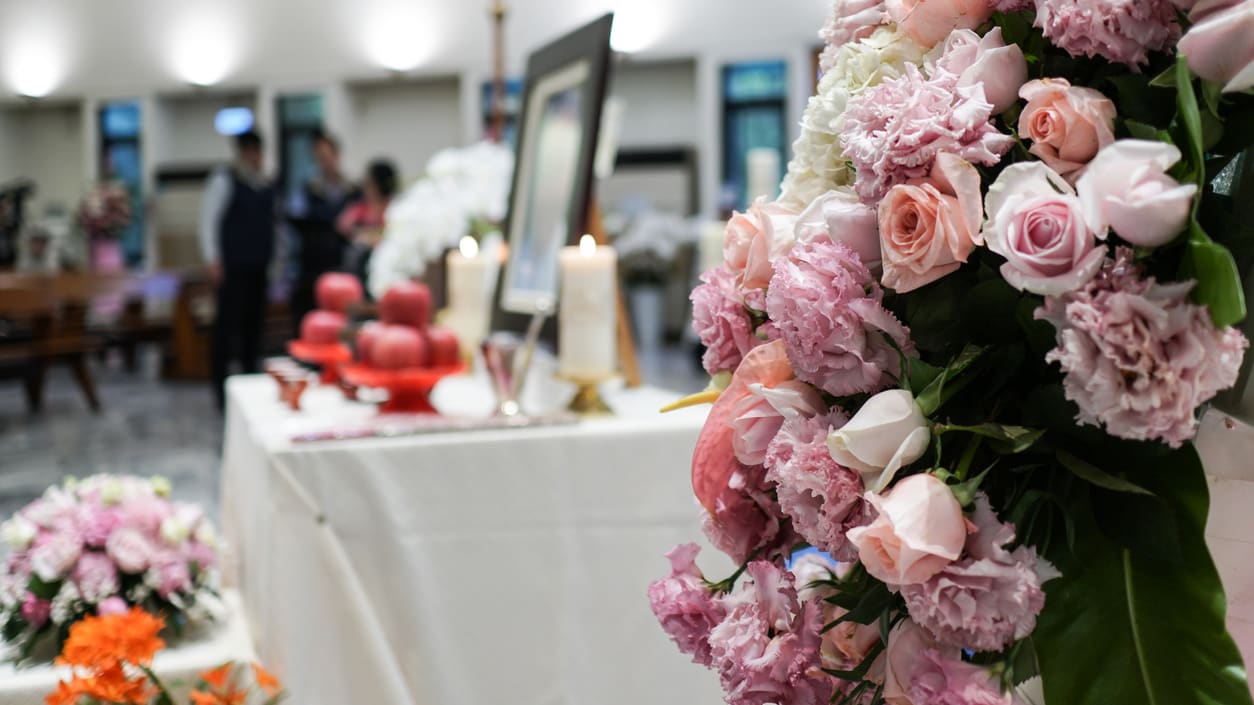On a sunny Thursday this March, relatives, friends and colleagues gathered at an Austin, Texas, office building to celebrate the life of Ben Cureton, who died suddenly a month earlier at the age of 45.
Cureton left behind not only his wife and their two young children but also the workforce that he'd led since 2013 as owner, president and CEOopens in a new tab of Workman Commercial Construction Services Ltd.
Experts said the steps that Workman took to communicate clearly during Cureton's illness and ensure a smooth succession after his death could serve as a model to other businesses planning for the potential loss of a top executive.
Paula White, Workman Commercial's chief financial officer, said that once Cureton went into a coma following a slip and fall, she and other company executives communicated regularly with employees about his health status and encouraged them to join a special Facebook group. When his outlook turned bleak, they revealed the news on a companywide conference call. On the day Cureton died, they e-mailed and called every employee.
Workman Commercial also updated outside stakeholders throughout Cureton's hospitalization and issued a news release about his death.
"Our employees were up to date; the bank and the bonding company were always informed," White said. "This made everything much smoother."
Tracy Benson, founder and CEO of On the Same Page LLC, a Katonah, N.Y.-based business consulting firm, said that an employer should do everything "reasonably possible" to let employees know about the death of a top executive before the news spreads, or at least in tandem with the information being made public.
"The pace of communication today is such that it is next to impossible to hold on to big news for more than a few hours, so plan for the information to become public before you'd like it to. And once it's public, it's internal, too," Benson said.
Even though some executives might balk at the idea, it's imperative to craft in advance a communication plan that addresses the sudden loss of a high-level leader, she said. "The time to plan is now, because no one is immune from the shock and loss that a sudden death delivers. If your organization has not yet confronted a catastrophic loss, take this as a cautionary tale and prepare," Benson said.
Another step that can help ease the shock is fashioning a succession plan. A well-developed succession plan like Workman Commercial's can boost workforce confidence and minimize business disruptions, Benson said.
Under Workman Commercial's plan, Travis Thrift, the company's minority owner and vice president, assumed the president and CEO roles. Additionally, Thrift is ascending to majority owner, White said, and the company is buying out Amy Cureton's ownership stake in Workman Commercial.
"We are thankful that we had Travis able and willing to step in. He is clearly qualified and respected," White said. "This was very important on day one."
White recommends that every employer conduct an audit of what would happen in the event of the unexpected death or terminal illness of a key corporate leader. She also suggests ensuring a sufficient amount of life insurance has been purchased for top executives and investing in a business continuity insurance policy.
"It is good to have extra dollars in the face of instability," she said.
Bob Deprez is founder and managing partner of Deprez Leadership Inc., a Denver-based advisory firm that helps businesses deal with leadership, ownership and financial changes. He said that appointing a new leader as soon as possible—as Workman Commercial did—assures employers, customers, suppliers and others of stability.
"If that assured leadership isn't there, you can expect deterioration of the business because customers and employees are leaving and other things of this nature," Deprez said.
Filling the leadership void could be especially challenging for a small business that lacks a leader-in-waiting or may need an executive to temporarily hold down two jobs, he noted.
As they face the reality of losing a leader, employees should be provided the chance to express their feelings in forums that align with the company's culture, such as the celebration of life service held by Workman Commercial, Benson said.
Benson noted that a leader's "persona may have been so expansive and integrated into the culture that employees may feel as though they knew him or her. In this spirit, they took risks together and celebrated successes together. These kinds of activities create strong personal ties."
"Likewise," she added, "employees may see him or her as somewhat heroic, especially if the person founded the company, broke new ground or led the company successfully through difficult times."
Benson recommended creating opportunities to let employees express their grief, such as an all-hands meeting where workers share personal stories about the departed executive. HR leaders also should consider inviting employees to drop by to chat and should look at temporarily beefing up availability of the employee assistance program.
"Create avenues for sharing stories and experiences as a way to move through the grieving process," she said. "Employees will want to honor the leader they have lost, and to reconnect with their memories of him or her as they … move through the grieving process. This not only allows employees to express their grief and honor the leader they have lost, it also creates a community within the organization over shared memories and supports them in their desire to create a shared future together."
An organization run by AI is not a futuristic concept. Such technology is already a part of many workplaces and will continue to shape the labor market and HR. Here's how employers and employees can successfully manage generative AI and other AI-powered systems.




